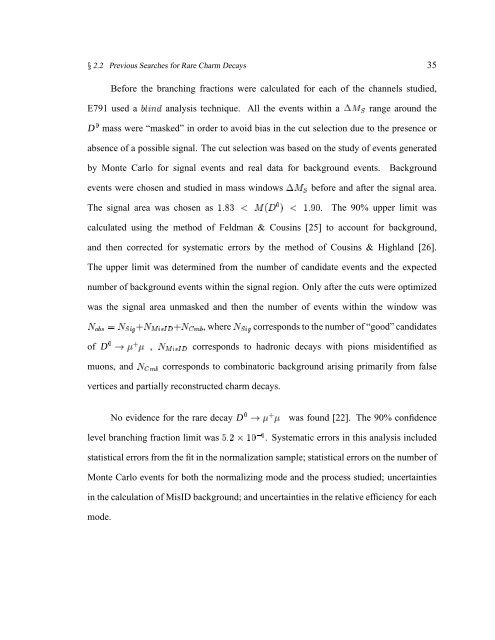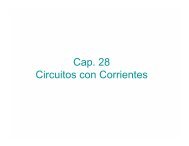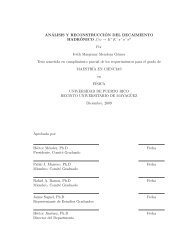A Search for Rare Decay D0 --> mu+mu - High Energy Physics UPRM
A Search for Rare Decay D0 --> mu+mu - High Energy Physics UPRM
A Search for Rare Decay D0 --> mu+mu - High Energy Physics UPRM
Create successful ePaper yourself
Turn your PDF publications into a flip-book with our unique Google optimized e-Paper software.
E791 used a p¢·©1¸X¹aWŠz2.2 Previous <strong>Search</strong>es <strong>for</strong> <strong>Rare</strong> Charm <strong>Decay</strong>s 35Be<strong>for</strong>e the branching fractions were calculated <strong>for</strong> each of the channels studied,ianalysis technique. All the events within a ƒž¹»º range around theDa mass were “masked” in order to avoid bias in the cut selection due to the presence orabsence of a possible signal. The cut selection was based on the study of events generatedby Monte Carlo <strong>for</strong> signal events and real data <strong>for</strong> background events.Backgroundevents were chosen and studied in mass windows ƒ¼¹½º be<strong>for</strong>e and after the signal area.calculated using the method of Feldman & Cousins [25] to account <strong>for</strong> background,U1¿F¨¾ŠF¬The signal area was chosen as z{ . The 90% upper limit wasand then corrected <strong>for</strong> systematic errors by the method of Cousins & <strong>High</strong>land [26].The upper limit was determined from the number of candidate events and the expectednumber of background events within the signal region. Only after the cuts were optimizedwas the signal area unmasked and then the number of events within the window was`«À*Á y †£Ầº¥Ã ÄŪẦÆÇà y\ÈYÉ Å§`«ÊËTÁ , where Ầº¥Ã Ä corresponds to the number of “good” candidatesof Da b d e d g , `«ÆÇà y1ÈÌÉ corresponds to hadronic decays with pions misidentified asmuons, and `«ÊËTÁ corresponds to combinatoric background arising primarily from falsevertices and partially reconstructed charm decays.No evidence <strong>for</strong> the rare decay Da b‚d e d g was found [22]. The 90% confidencelevel branching fraction limit wasstatistical errors from the fit in the normalization sample; statistical errors on the number of‹Í‘z¥{ gŽ’ . Systematic errors in this analysis includedMonte Carlo events <strong>for</strong> both the normalizing mode and the process studied; uncertaintiesin the calculation of MisID background; and uncertainties in the relative efficiency <strong>for</strong> eachmode.






